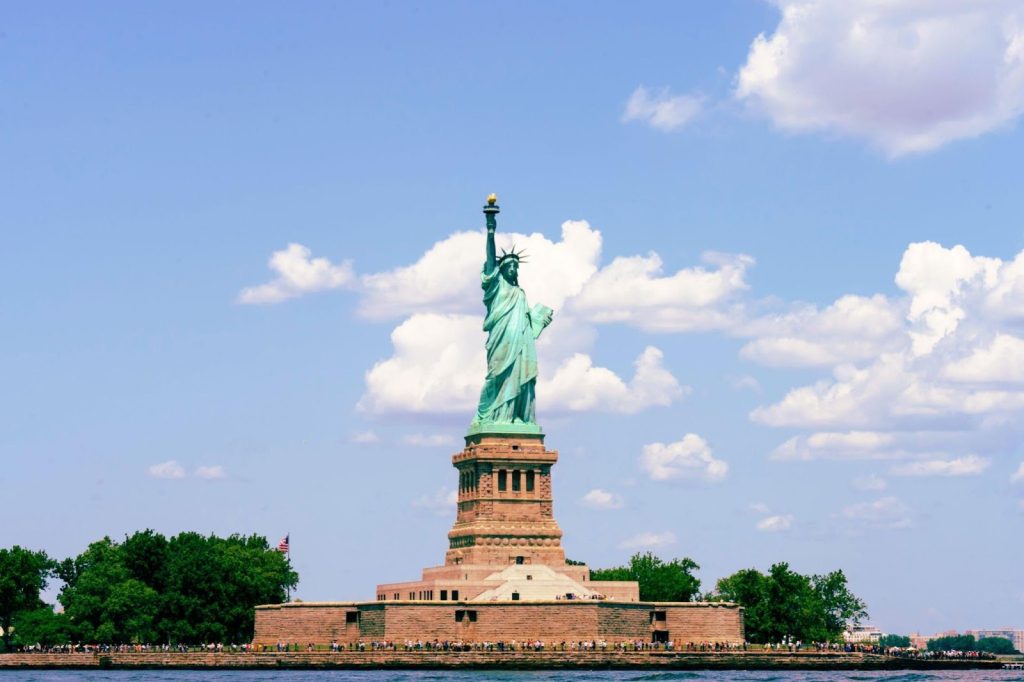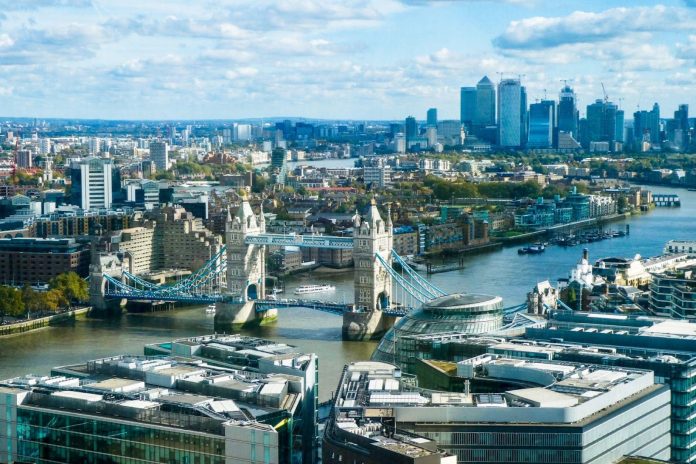Traveling to the most expensive cities in the world is a costly and lavish experience. There is no way to put it politely – you will be breaking the bank with travel costs in these cities.
If you want to visit these cities, your best option would be to save as much money as possible before going there and do your COVID-19 homework for each destination, so you know what is expected of you on arrival and departure. Should you buy some lateral flow tests or book a PCR test? These days it’s important to get up-to-date advice.
In the meantime, research up on how to find cheap flights and affordable accommodation. It can make a huge difference when you don’t have a lot of cash on hand. For each city we visit, we will talk about the public transport facilities, rate them out of 10 for the overall experience, and give you any tips on finding affordable travel to and around your destination.
London – 7/10
The capital of the UK, London, is one of the most expensive cities in the world to live and work in, but fortunately, their public transportation system is a great way to get around.
The bus network is extensive and strikes a good balance between quality and affordability, costing as little as £1.60 per journey. You must pay by debit or Oyster card. The buses do not accept cash at any point.
Taxis are also affordable, primarily if you use a taxi comparison site to find out about special offers at local cab services.
Both buses and trains offer day/week travel cards that give you discounted rates for using them multiple times during the day or week. In both cases, these cards can save you a lot of money if you use public transport often – up to 55% cheaper than paying cash fares.
One of the cheapest and best public trips you can take is on the Emirates Airline Cable Car – it regularly runs up the East side of the River Thames, and there are several stops along the route. The ride offers exceptional views of downtown London for only £4.30 per person one way.
New York – 8/10
The Big Apple has an excellent public transportation system that’s very cheap! For example, riding on buses and subways costs $2.75 per ride (with unlimited transfers), but if you buy ten rides at once (on an Unlimited Subway Pass), it will cost $33 for seven days, saving you almost 50% off regular fares.
Similarly, taxis are also reasonably priced, with many trips costing around $10-12 dollars plus a 15% tip (depending on where you’re going). This makes both public transport and taxis affordable in New York.
Don’t forget to take the public ferry around the Statue of Liberty, which offers some of the most fabulous views of New York City at a reasonable cost.

Sydney – 7/10
The public transport network in Sydney is outstanding – trains are comfortable, fast, and frequent both above ground and underground. They also have a great train/rail pass system if you plan to use it frequently throughout your stay. Buses are affordable at around $3 for an unlimited daytime ride on all bus services in greater Sydney. It’s even better with weekly options costing only $25-$55 depending on how long you’re staying for.
If you’re planning any trips outside of Australia’s most significant state capital, remember that their Skytrain (a type of monorail) goes all the way to Bondi Beach (just east of Sydney).
While in Sydney, take the public Harbour City ferry across the harbor to view Opera House and Harbour Bridge or enjoy a cheap leisurely ferry ride across the water.
Singapore – 9/10
While buses are affordable, the train network is costly to use at $2.50 for each ride – so extreme budget travelers beware! A new license called an EZ-link card can save you some money if you’re using public transport often.
The card costs $15 and allows up to a 30% discount on fares if purchased weekly or in advance.
Still want to visit? There are plenty of ways around the budget problem that will accommodate most pockets – chartering a taxi or having someone drive you would be the cheapest, and it means more freedom of movement. If you prefer flexible transportation options, consider renting a car for the duration of your stay or signing up with Uber to find cheap cabs.
Paris – 6/10
If there’s one thing the French do well, it’s public transportation networks. For example, Paris has an extensive bus network that covers most parts of the city, but you may find them hard to use without knowing any French – they’re marked by their numbers (route 69 for a scenic route) instead of names like in many other cities.
All taxis in France operate on a meter, which will be displayed inside the cab and is legal for all passengers to check before setting off.
The Metro in Paris is clean and efficient, making it one of the best ways to get around central Paris at an affordable rate. It costs just over €2 for a single journey with unlimited changes possible from station to station within 90 minutes using a rechargeable metro card that costs under €25. Don’t forget your ticket – otherwise, you’ll have to pay a fine of up to €180 on top of paying full fare.
Osaka – 9/10
Japan has a lot of affordable public transport options, including fantastic taxis that are cheaper than in many Western countries. For example, the typical 10km journey costs between ¥750 and ¥900 depending on traffic conditions – not bad at all.
Taxis will generally use an exact amount meter even if you don’t know Japanese, so try to get this number down before setting off to save money.
If you would prefer more flexibility with your transportation options, consider getting yourself an ICOCA pass. This chargeable travel card allows up to five people to travel together at a reasonable rate for just under ¥35 per day/week or ¥100 per month.

Los Angeles – 5/10
LA has an extensive bus network covering most of the city, but you’ll find the lines confusing if you don’t know where you’re going. Some buses have names or letters to indicate which areas they go to – but others are numbered in order (not counting express routes).
Consider using taxis. LA taxi prices are incredibly reasonable at $2.60 per kilometer plus a $5 flat rate charge, and tipping is not optional. Not tipping could cause an argument; expect to tip 20% of your fare.
Hong Kong – 7/10
Perhaps unsurprisingly, public transport in Hong Kong is one of the most expensive ways to get around. For example, a bus fare will cost between HKD4 and HKD5 per journey if you don’t have an Octopus card or other transport card – so consider getting one even for your stay in China as they’re handy here too.
Don’t miss an opportunity to travel on the Star ferry, though. These ferries are very cheap, and the views make for a great way to see some of Hong Kong’s spectacular sights – particularly at sunset.





























